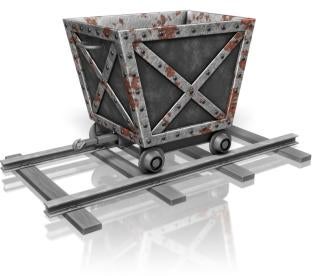On January 23, the Mine Safety and Health Administration (MSHA) will publish in the Federal Register a Final Rule on Examinations of Working Places in Metal and Nonmetal Mines, amending 30 C.F.R. § 56.18002 (Surface) and § 57.18002 (Underground). The final rule contains major amendments to the existing standards that will impose substantial administrative burdens on mine operators and create new risks of heightened enforcement against operators and supervisors.
The final rule includes the following key requirements:
-
A competent person must complete a workplace examination, at least once each shift, for each working place where miners are scheduled to work.
-
The examination must be completed before miners begin work in that place.
-
Mine Operators must provide to miners who will be working in that place prompt notification of adverse conditions found. Mine operators must promptly initiate any corrective actions.
-
A record of the examination must be completed prior to the end of the shift.
-
The examination record must contain:
-
the name of the person conducting the examination;
-
the date of the examination;
-
the location of all areas examined;
-
a description of each condition found that may adversely affect safety or health;
-
the date the corrective action was taken;
-
-
The mine operator must keep the examination record for one year and make the record available to MSHA and the miners’ representative, with a copy provided upon request.
-
Imminent dangers found in the examination must be brought to the immediate attention of the operator and all persons must be withdrawn.
It appears that the rule will become effective 120 days after its publication in the Federal Register. MSHA is expected to hold multiple stakeholder meetings and issue enforcement guidance prior to the effective date.
The new rule imposes a number of significant, new burdens on operators. These include the requirement that examinations be completed before work is begun in the area and that miners be notified of conditions found in the examination. These new requirements will require mine operators to develop and implement entirely new procedures.
The rule also contains new provisions that could lead to additional enforcement, namely the requirement that the examination record include a description of conditions found and the date that each condition was corrected. It is not hard to imagine that inspectors will be carefully reviewing examinations for possible use in issuing citations for conditions noted or, at the very least, designating such citations as “unwarrantable failure” and/or “high negligence.”
The Current Rule
The current standards, now to be replaced, require that “a competent person designated by the operator shall examine each working place at least once each shift for conditions which may adversely affect safety or health.” They also require that the operator “promptly initiate appropriate action to correct such conditions” and that the operator keep a record that the examination was conducted for one year and make it available for review by MSHA. Finally, the current standards require that any condition that “may present an imminent danger” that is found in the examination “shall be brought to the immediate attention of the operator who shall withdraw all persons . . . until the danger is abated.”
Over the years, MSHA has attempted several times to expand the requirements of the current standards through altering the agency’s enforcement guidance. Each time, this has been met by strong opposition from industry as the standards’ plain language clearly did not permit a broader interpretation. MSHA then launched the current rulemaking process in June of 2016 to attempt to impose through notice and comment rulemaking new obligations on operators that the agency could not require through the current standards.
Guidance in the Preamble
The preamble to the final rule contains limited guidance on how MSHA will interpret and implement certain provisions in the new rule, including the following:
-
Examinations are to be conducted close enough to the start of work such that conditions would not be expected to change.
MSHA states that mine operators will have “flexibility on when to conduct an examination;” however, operators are to “ensure that the time between the examination and the start of work is such that the operator would reasonably not expect conditions in the examined area to have been able to change adversely during that period.” The preamble ambiguously goes on to state that examinations are required “at least” once per shift, but that operators should continue to identify and correct adverse conditions whenever they occur, not just before work is to be done.
-
Examinations may be conducted before or after the shift begins.
The required timing of the examination is based on when work is to begin in an area in that shift, not when the shift itself begins. MSHA also states that for an overlapping or maintenance shift, the examination only has to be made before work begins in the area. An additional examination is not needed as long as the examination is done close enough to when work begins to detect adverse conditions.
-
If miners are not scheduled to work in an area or place during the shift, then an examination is not required.
Here, the preamble specifically uses the word “scheduled,” which leads to the question of what is meant by “scheduled.” MSHA does not clarify as to whether an examination would be required where at the beginning of the shift it was not expected that any work would be performed in a particular area, but, due to changing circumstances, a miner did end up working there.
-
“Working Place” means all locations at a mine where miners work in extraction or milling.
MSHA explains that “working place” includes roads traveled to and from a work area. It excludes roads not directly involved in mining, office buildings, parking lots, lunchrooms, toilet facilities or inactive storage areas. Abandoned, isolated or idle areas only have to be examined when miners will perform work in these areas during the shift, unless another standard requires it.
-
The definition of “competent person” is unchanged.
MSHA restates the existing policy that a “competent person” is one who is “able to recognize hazards and adverse conditions that are expected or known to occur in a specific work area or that are predictable to someone familiar with the mining industry.” A competent person does not have to be a supervisor, although MSHA states that would be a “best practice.”
-
Miners must be notified of adverse conditions before work or as soon as possible after the start of work in the area.
Notification is not required if the condition is corrected before miners begin work in the area, but the examination record must note the condition. Operators may notify miners through signage or verbally. Notification must be given “before miners are potentially exposed to the condition . . . or as soon as possible after work begins if the condition is discovered while . . . working in an area.” The operator must continue to notify miners each shift until the condition is corrected.
-
The signature of a competent person or a description of any corrective action taken need not be included in the examination record.
MSHA states that a signature is not required as that is not necessary to hold the examiner legally responsible. The agency also states that the record can be made at any time before the end of the shift for which the examination was conducted.
-
Operators must record adverse conditions.
Even if they are corrected before work begins, adverse conditions must be recorded. However, if correcting the adverse condition takes more than one shift, the adverse condition does not have to be recorded each shift (notification does have to continue to be made each shift).
Key Takeaways
Heightened Supervisor Liability
MSHA states that the agency does not intend to use the examination record to issue citations based “solely” on the conditions recorded. However, by deliberate use of the qualifying word “solely,” MSHA leaves open the opportunity to use the examination record as a roadmap to other evidence of a violation and certainly to rely on it at least in part as establishing existence of a violation. The agency also can be expected to use an examination record to support unwarrantable failure and high negligence findings, which can, in turn lead to liability under Section 110(c) of the Mine Act for supervisors involved in the workplace examination process or in correction of the conditions noted.
Significant Recordkeeping and Notification Requirements
The new final rule establishes recordkeeping and reporting requirements that will impose significant burdens on mine operators. The prior rule did not contain any requirements for conditions noted to be recorded on the workplace examination record nor did it require notification to miners. It also did not direct that any record of corrective actions be made at all. With these newly added steps to complete the workplace examination process, the new rule will greatly increase the administrative burden on operators. It also will provide MSHA with more bases for issuing citations, as presumably it would be a violation not to complete any one of the mandated requirements under the rule. As a number of these requirements likely will fall to supervision or management to perform, these violations also could be more likely to be issued with heightened findings of aggravated conduct and negligence.




 i
i

